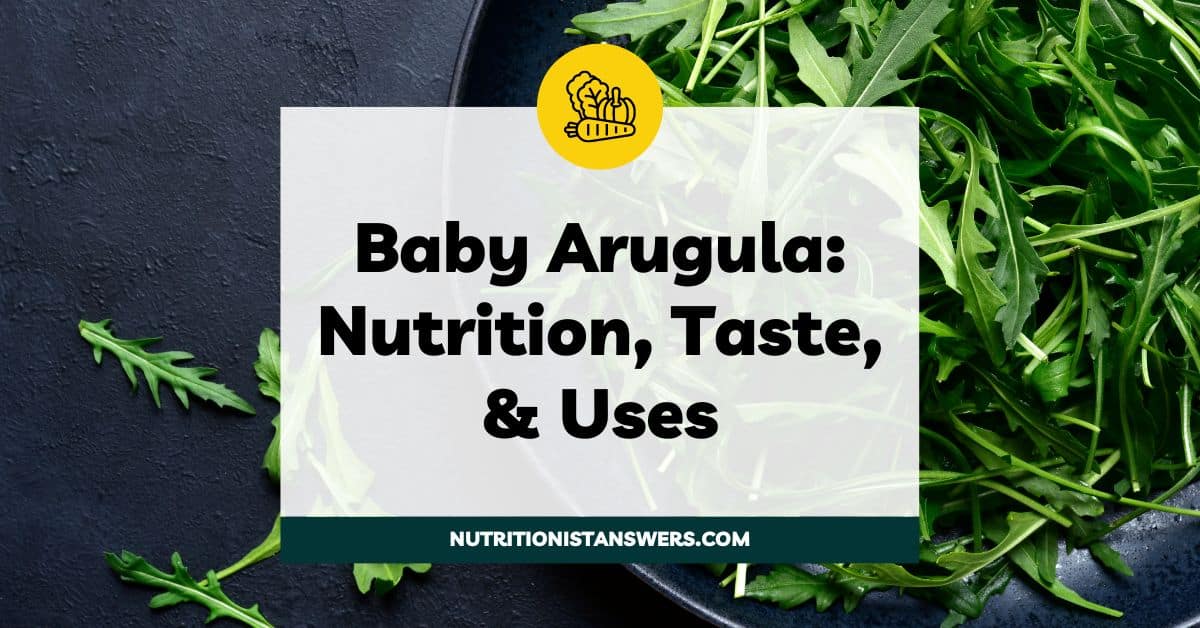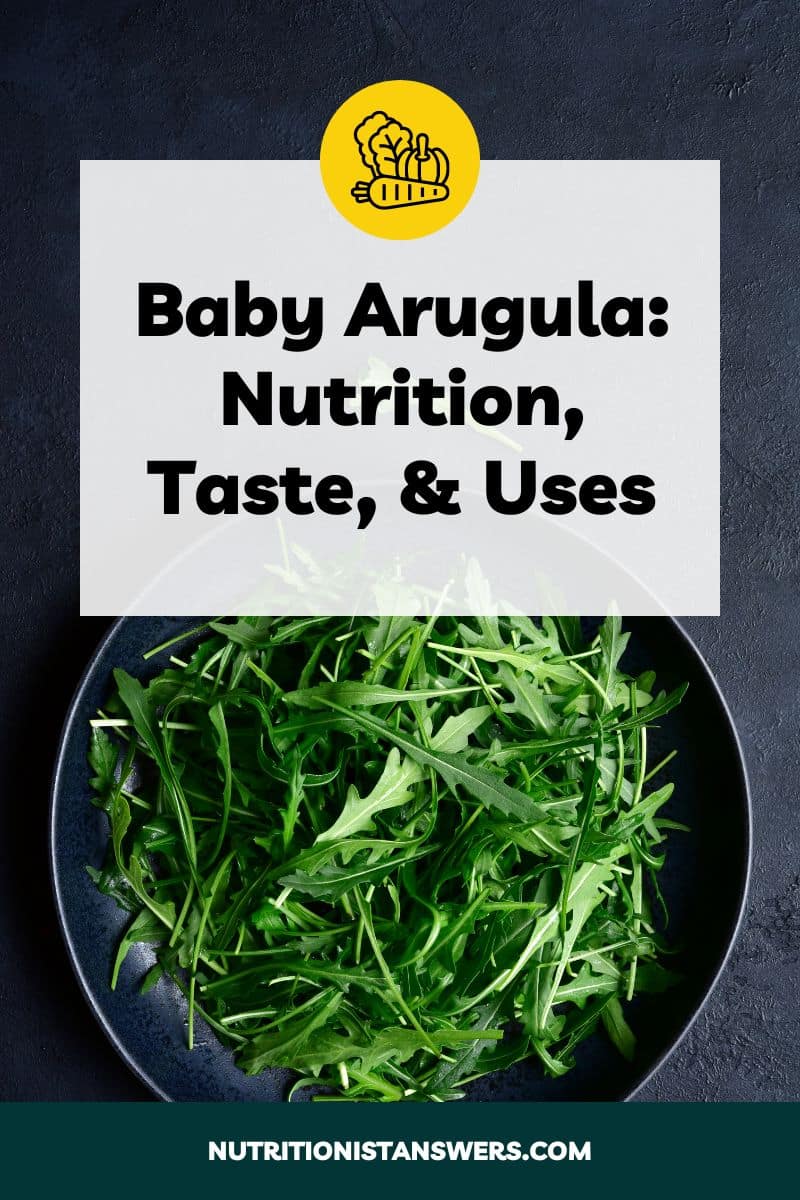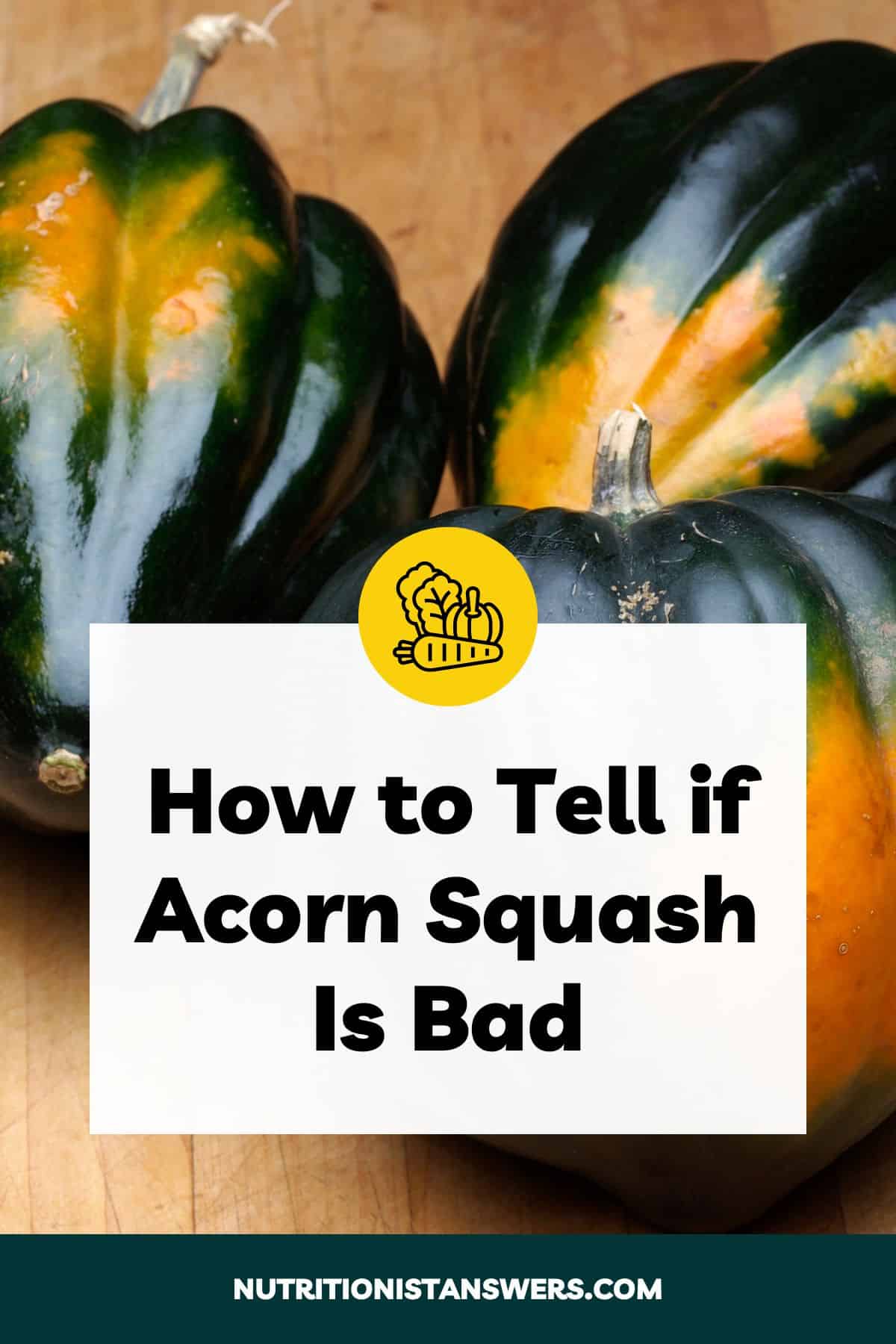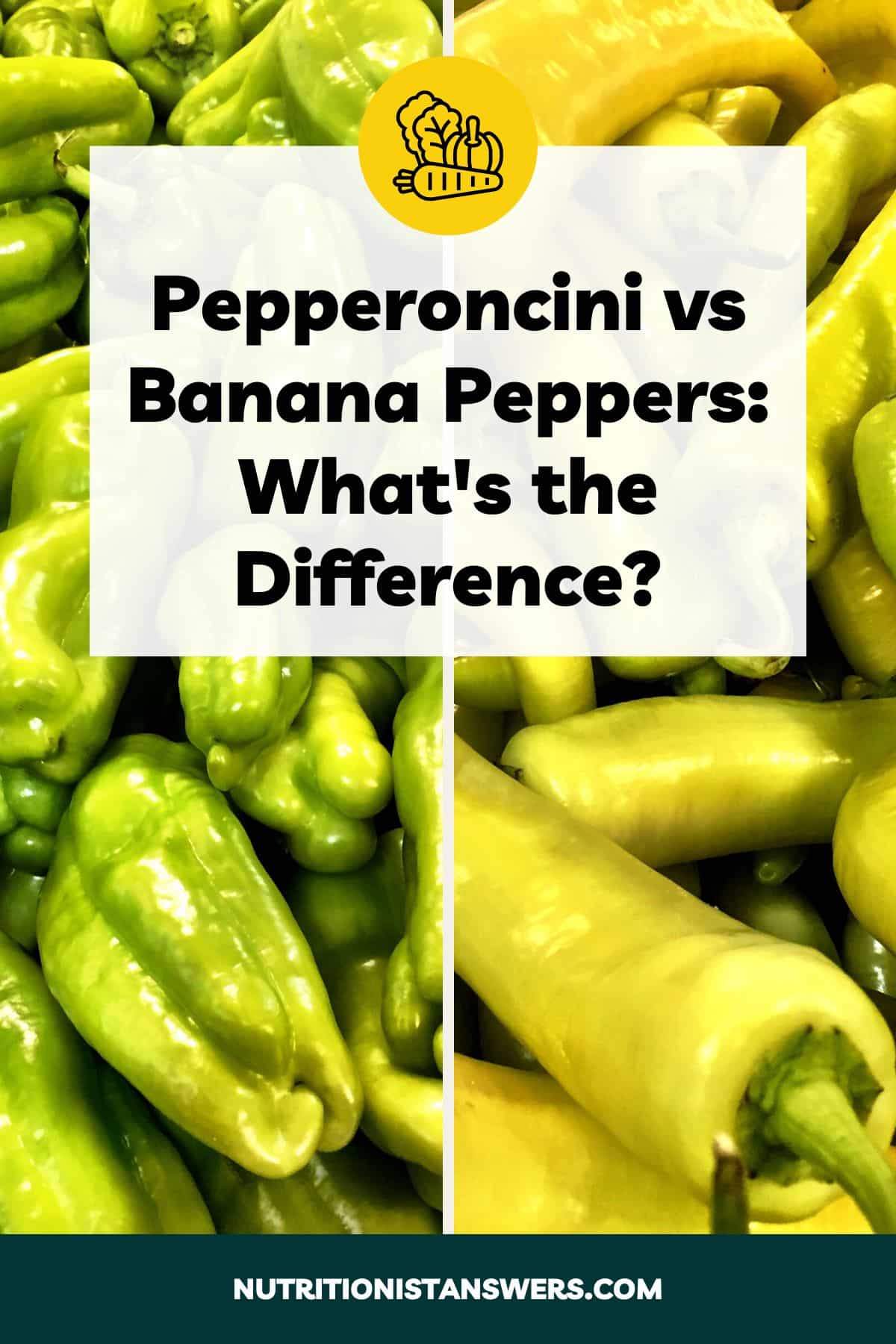Baby arugula are young, tender arugula leaves that have been harvested early. They’re a popular salad ingredient and can be found in most grocery stores.
Regular arugula’s bold, peppery taste can be polarizing. If you’re not a fan, you might want to give baby arugula a try — its flavor is similar to arugula but milder and more delicate.
In this article, we’ll discuss everything there is to know about baby arugula, including nutritional information and how to use it.

What is baby arugula?
Baby arugula is simply arugula leaves that are harvested early, while they’re still small and tender. It belongs to the Brassica family along with kale, cabbage, and broccoli (1).
Like regular arugula, baby arugula leaves are bright green with multiple round or pointed lobes. The main difference is their size — baby arugula are much smaller, about 2-3 inches long.
Baby arugula has a slightly bitter, peppery flavor but tends to be milder and less pungent than regular arugula. If you’re not a fan of arugula’s bold taste, you might have better luck with baby arugula.
You can find fresh baby arugula in the produce section of most grocery stores, as well as farmers’ markets and health food stores. It is typically sold in plastic clamshell containers or bags.
Baby arugula can be added to salads, sandwiches, pastas, and even as a pizza topping. Its delicate leaves also make it a great garnish for soups, cooked meats, and other dishes.
What does baby arugula taste like?
Baby arugula tastes like a milder version of regular arugula. It is slightly bitter and peppery with a tender, delicate texture.
Baby arugula nutrition
Baby arugula is low in calories and fat while providing a small amount of carbohydrates, fiber, and protein. It is also an excellent source of vitamins A, C, and K.
Here’s a more detailed breakdown of the nutrients found in baby arugula:
Calories and macronutrients
Here’s the macronutrient content for a 2-cup (50-gram) serving of arugula (2):
- Calories: 12
- Carbohydrates: 1.8 grams
- Fiber: 0.6 grams
- Protein: 1.2 grams
- Fat: 0.3 grams
Compared to other regular arugula, baby arugula provides a similar amount of calories, carbohydrates, and fiber (3).
Vitamins and minerals
Here’s the vitamin and mineral content for baby arugula, based on a 2-cup (50-gram) serving size (2):
- Vitamin K: 57 mcg (48% DV)
- Vitamin A: 1175 IU (24% DV)
- Folate: 47 mcg (12% DV)
- Vitamin C: 7 mg (8% DV)
- Magnesium: 24 mg (6% DV)
- Calcium: 83 mg (6% DV)
- Potassium: 183 mg (4% DV)
- Iron: 0.6 mg (3% DV)
- Sodium: 15 mg (<1% DV)
A 2-cup (50-gram) serving of baby arugula provides nearly 50% of the Daily Value (DV) for vitamin K, which is important for proper blood clotting (4).
Baby arugula is also a rich source of vitamins A, C, and folate, and offers smaller amounts of several minerals, including magnesium and calcium.
Although baby greens tend to be more nutrient-rich than fully grown greens, baby arugula and regular arugula seem to have about the same amount of vitamins and minerals (3, 5, 6).
Where to buy baby arugula
Baby arugula is available in plastic clamshell containers in the refrigerated produce section of most supermarkets and health food stores. It is usually sold in 5-ounce or 16-ounce portions.
Depending on your location, you might also be able to find baby arugula at your local farmers’ markets. Another option is to grow your own baby arugula at home.
How to store baby arugula
If stored properly in the refrigerator, baby arugula should stay fresh for about one week.
Store fresh baby arugula in its original packaging or in a plastic bag and keep it in the crisper drawer of the refrigerator.
Most baby arugula you’ll find at the grocery store is pre-washed. If you buy baby arugula at a farmers’ market, you may need to wash it yourself at home using a salad spinner.
Don’t wash baby arugula until you’re ready to use it. The water can increase bacterial growth and cause them to rot faster, even in the fridge.
Freezing baby arugula is possible but not recommended, because its delicate leaves turn mushy when thawed.
However, if you plan to use baby arugula for making pesto or blended soups, you could blanch the leaves, then puree with water or olive oil and freeze in an ice cube tray.
Ways to use baby arugula
1. Salads and side dishes
Baby arugula is a great way to add a little extra flavor and nutrition to your salads and side dishes.
Try tossing a handful of baby arugula with other salad greens and pair with toppings like berries, citrus fruits, soft cheeses, and chopped nuts. Then, top it all off with a tangy vinaigrette.
Due to its delicate texture, baby arugula doesn’t hold up well to heat. It’s best used in cold salads or as a garnish that’s added after foods have been cooked.
2. Sandwiches and wraps
Looking for a way to spice up your sandwiches and wraps? Try baby arugula — it’s an excellent choice for anyone who finds regular arugula to be too bold and pungent.
Baby arugula’s mild peppery flavor pairs beautifully with creamy ingredients like avocado or goat cheese, and it adds a refreshing crunch when combined with crisp cucumbers or thinly sliced red onions.
3. Sauces, pestos, and dips
Baby arugula can be incorporated into a variety of pestos and dips for a boost of flavor and nutrition.
Try substituting baby arugula for basil in pesto recipes along with garlic, pine nuts, parmesan, and olive oil. Arugula pesto can be stirred into pasta dishes or used as a base for pizza toppings.
4. Pizzas and flatbreads
Baby arugula can add a fresh, nutritious twist to your pizzas and flatbreads.
It pairs well with rich cheeses like fresh mozzarella, cured meats like prosciutto, and sweet elements like figs or caramelized onions. It’s typically added after the pizza is cooked.
5. Soups and stews
Incorporating leafy greens like baby arugula into your soups and stews can elevate their taste and nutritional content.
Due to its very delicate texture, baby arugula is best used as a garnish for soups and stews. It pairs well with cream-based soups and ingredients like white beans, potatoes, and sausage.
6. Pasta dishes
Dark, leafy greens like baby arugula are a great way to elevate pasta dishes and sneak in an extra serving of veggies.
Baby arugula pairs well with garlic butter sauce, parmesan cheese, and lemon zest. It should be tossed with the freshly cooked pasta while it is still hot — this allows the leaves to wilt without becoming mushy.
Final thoughts
Baby arugula is a milder, less peppery form of regular arugula that is harvested early while its leaves are still tender and delicate.
Like regular arugula, baby arugula is low in calories and carbohydrates. It is packed with vitamins A, C, and K and also provides a small amount of several minerals, including magnesium and calcium.
If you’re not a fan of regular arugula’s bold flavor, give baby arugula a try. It’s perfect for adding to salads and sandwiches and makes an excellent garnish for soups, pizzas, and pasta dishes.
Amy Richter is a Registered Dietitian Nutritionist based in Missouri. She is an experienced nutrition writer and medical advisor for Healthline and Medical News Today. Amy is passionate about all things food-related and enjoys translating complex science into easy-to-understand articles.





